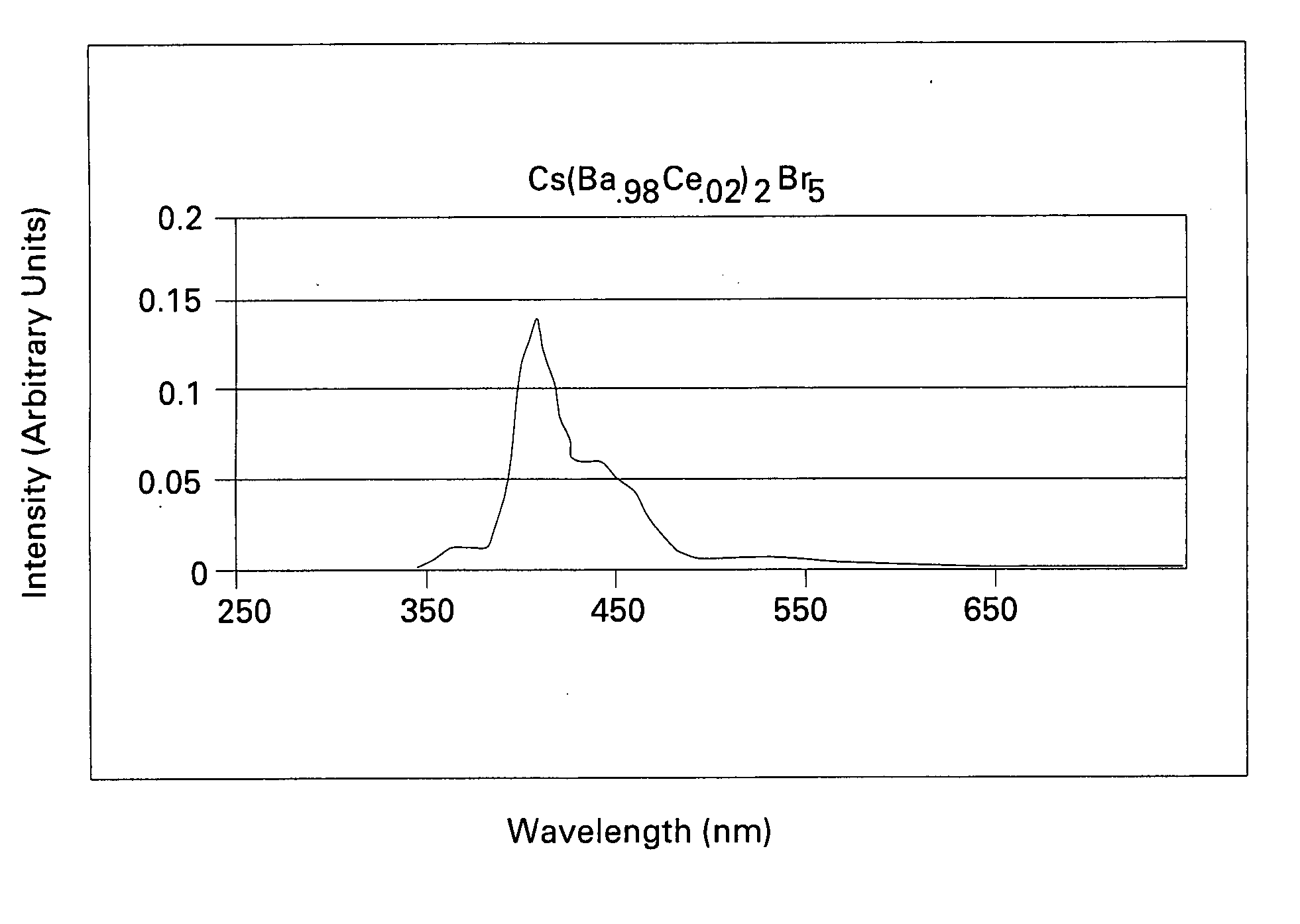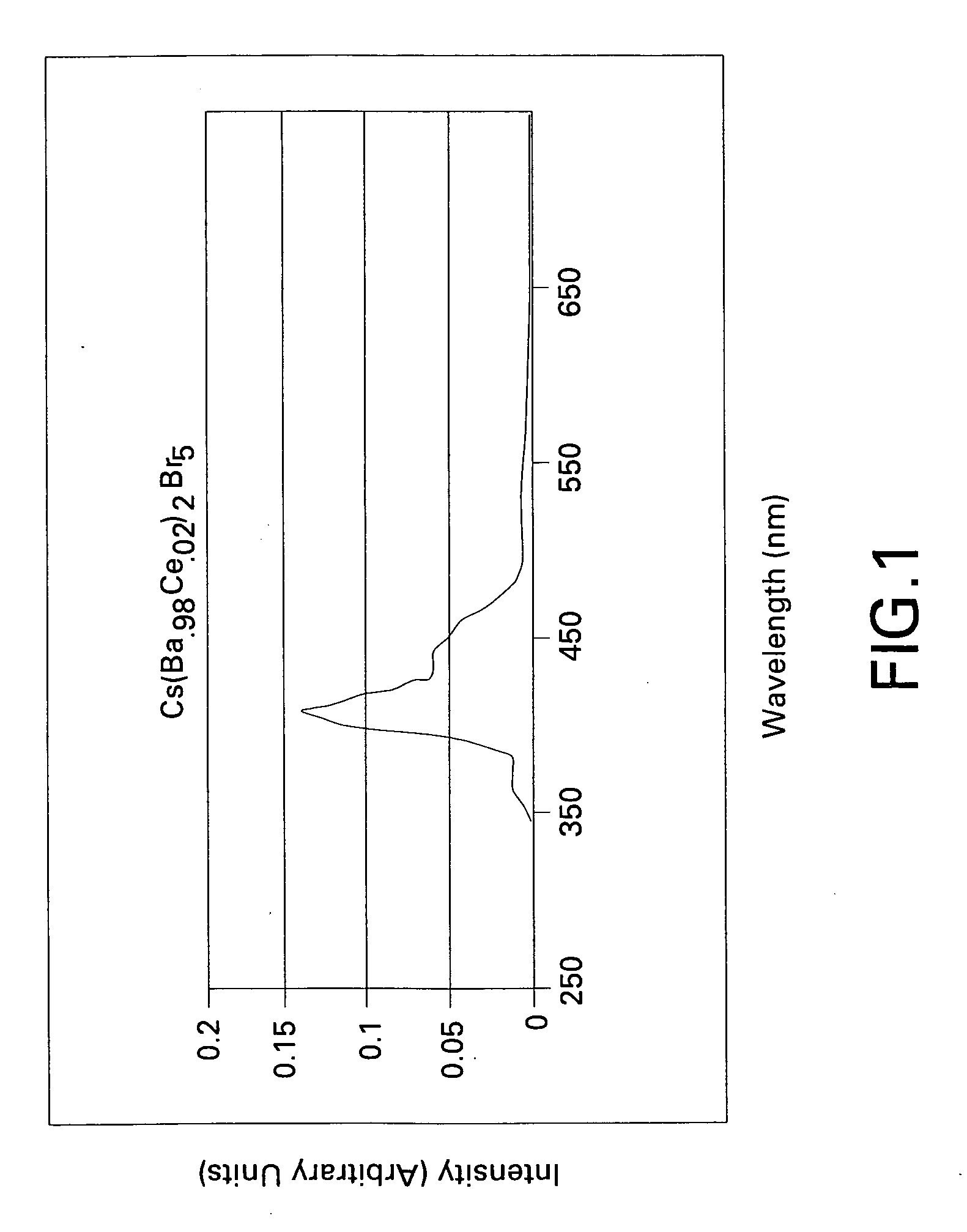Scintillator materials which are useful for detecting radiation, and related methods and articles
a technology of scintillator materials and radiation detection, applied in the field of luminescent materials, can solve the problems of low light yield, inability to produce large-size, high-quality single crystals, and many other problems, and achieve the effect of reducing the number of scintillators
- Summary
- Abstract
- Description
- Claims
- Application Information
AI Technical Summary
Benefits of technology
Problems solved by technology
Method used
Image
Examples
examples
[0048] The example which follows is merely illustrative, and should not be construed to be any sort of limitation on the scope of the claimed invention. A 2 gram sample of a cerium-activated scintillator composition was prepared in this example. The matrix portion of the composition had the formula CsBa2Br5. To prepare the sample, 0.5273 grams of CsBr, 1.4431 grams of BaBr2, and 0.0376 grams of CeBr3 were weighed in a glove box. The materials were thoroughly blended, and then sealed in a silver tube. Firing was carried out at about 800° C. for 5 hours, under an inert atmosphere. The nominal formula for the composition after firing was Cs(Ba0.98Ce0.02)Br5.
[0049] The emission spectrum for the sample was determined under X-ray excitation, using an optical spectrometer. FIG. 1 is a plot of wavelength (nm) as a function of intensity (arbitrary units). The peak emission wavelength for the sample was about 400 nm. It was also determined that the scintillator composition can be excited by ...
PUM
 Login to View More
Login to View More Abstract
Description
Claims
Application Information
 Login to View More
Login to View More - R&D
- Intellectual Property
- Life Sciences
- Materials
- Tech Scout
- Unparalleled Data Quality
- Higher Quality Content
- 60% Fewer Hallucinations
Browse by: Latest US Patents, China's latest patents, Technical Efficacy Thesaurus, Application Domain, Technology Topic, Popular Technical Reports.
© 2025 PatSnap. All rights reserved.Legal|Privacy policy|Modern Slavery Act Transparency Statement|Sitemap|About US| Contact US: help@patsnap.com


